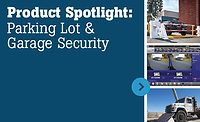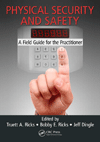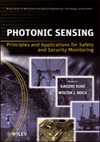Five Best Practices for Securing a Parking Garage

Technology continues to fundamentally change the way many businesses operate. The parking industry is no exception. In recent years, operators have rapidly moved toward automated, unmanned garages. As drivers arrive, they’re greeted with user-friendly ticket dispensers. Exits are equipped with self-service payment stations.
But maintaining security is a greater challenge as operators continue to decrease onsite manpower. According to the federal Bureau of Justice Statistics, more than 11 percent of U.S. property crimes occur in parking garages and lots, as well as seven percent of violent crimes against people.
Fortunately, the security industry has proven solutions available. Here are five best practices for keeping both people and property safe in a parking environment.
1. Emergency stations
When garage patrons feel threatened, they want help right away. And it’s not unusual for mobile phone service to fail behind thick concrete walls – above or below ground. That’s when emergency stations, both towers and wall-mount boxes, are needed to provide immediate assistance. With the touch of a button, customers can quickly be in contact with security professionals. Built-in video cameras provide security officers additional information to help evaluate the situation. And the stations’ bright blue lights make them easy to locate.
Stations can broadcast announcements providing patrons with information during emergency situations. In addition, for patrons with a dead battery or flat tire, the stations are there to ask staff for help.
2. Charging area communication
With more electric-powered cars on the road, many parking facilities are installing charging stations as an added convenience for patrons. These are also good places to add a separate communications station for assistance about the charging process or to report an emergency situation.
3. Access control
Access cards and readers let monthly parkers enter and exit through special lanes. The access system’s audit trail provides operators with a better idea of which vehicles are present during emergencies. Operators should lock all pedestrian doors into the garage with a card reader or keypad installed to provide entry for employees or first responders. Adding audio intercoms to ticketing machines provides two-way communication for assistance in case the customer has questions on how to use the machine or should there be an equipment failure.
4. Video surveillance
Live, real-time video from security cameras lets offsite security personnel spot and take action on potential or real problems before they escalate. But choose cameras for their ability to provide clear video in low-light locations. Cameras should monitor entries and exits, pay stations, elevators and stairwells. Security cameras have been shown to be a major criminal deterrent, so paint them bright colors, install a monitor at entries showing live feeds and use large signs announcing the garage is under surveillance.
It’s unlikely video will be monitored 24/7. That’s why video analytics can help. License plate recognition software is effective. LPR links license plates to credit cards so monthly parkers can enter the garage without an access card. Other analytics can improve pedestrian safety by stopping barrier gates when a camera detects a person standing in their paths. Operators can also use analytics to spot abandoned or improperly parked cars or vehicles moving in the wrong direction.
5. Design and maintenance
Criminals often like to work in dark places, so keep the garage well lit. And have a standby source of power to keep the lights on and gates operating in case of a power outage. Fences, gates, bollards – even trees and bushes – can limit the number of pedestrian and vehicular entries into a garage.
People who are lost or confused make good targets for criminals. Signs showing the path to elevators, stairways and emergency stations are helpful. Use colors, symbols or names to help patrons remember what floor they parked on. Choosing payment machines that accept only credit cards eliminates the need for patrons to carry cash, a top target for criminals.
A poorly maintained garage sends a message a garage operator isn’t likely serious about security. So, immediately repair any damage, replace burned out bulbs and paint over graffiti. Let criminals know they need to pick another target.
It’s good business for parking operators to protect the people and vehicles in their garages. And most do their best to employ the best available security practices so they can continue with their long-term plans for total automation.
Looking for a reprint of this article?
From high-res PDFs to custom plaques, order your copy today!









